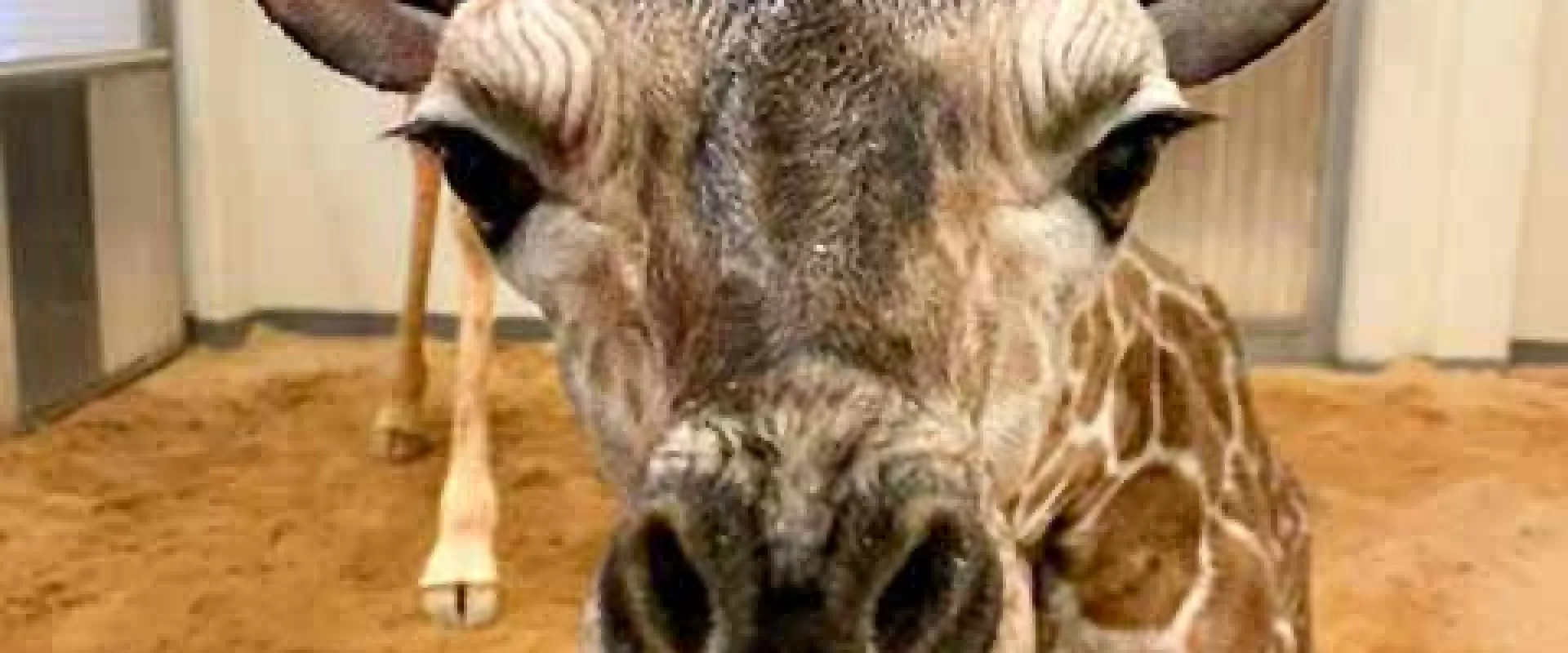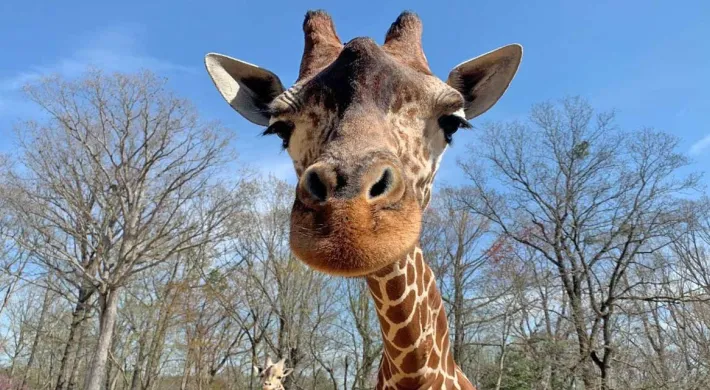Asheboro, N.C. – May 24, 2023 - The North Carolina Zoo is excited to announce a soaring addition to its family. The Zoo’s 13-year-old giraffe Leia gave birth to her calf—already about six feet tall—on Saturday, May 20.
The 145-pound calf was born to parents Leia (cow) and Jack (bull). The first-time mom and her offspring are healthy and currently bonding behind the scenes. The Zoo has had 12 previous giraffe births, making this one lucky 13.
The Zoo's animal care team will determine when mom and calf will join the herd—or tower (group of giraffes) on habitat and in public view. The public is encouraged to tune into the Zoo's social media channels for photos, updates, and information about how the calf will be named.
In a combined statement from the Zoo’s Giraffe Zookeepers Kristi Myers, Jason Balder, Mary Wilson, and Kelly Davis: “Leia and her calf are doing amazingly well. Our team could not be prouder of how attentive Leia has been with her firstborn. Mom and calf are bonding behind the scenes.”
They continued: “This new arrival brings the team lots of happiness and excitement to have some young, spunky energy around. The rest of the giraffe tower - Jack, Turbo and Amelia - are all very curious of the newbie and are bopping noses whenever they can.”
North Carolina Zoo Director, Pat Simmons, said “The giraffes at the North Carolina Zoo serve as ambassadors for their wild cousins, giving our guests the opportunity to learn about these majestic creatures and the conservation challenges they face. The Zoo’s direct engagement with conservation in Africa means that every Zoo visitor is helping to ensure the future of this and other species.”
Leia was born in 2009 at Zoo Miami and arrived at the Zoo in 2014. Jack was born in 2008 at Dickerson Park Zoo and arrived at the Zoo in 2009.
Their pairing resulted from a recommendation by the Species Survival Plan of the Association of Zoos and Aquariums (AZA) which maintains the genetic diversity of species that are in human care.
Giraffe calves are typically five to six feet tall and 150 to 200 pounds when born. This calf appears to be within those healthy parameters. Giraffes are pregnant for a long 14 to 15 months.
Giraffes are the tallest land animals. Female giraffes are up to 14 feet tall and weigh up to 1,500 pounds. Meanwhile, males are up to 18 feet tall and can weigh 3,000 pounds. At this height, a giraffe can look into a second-story window. Male and female giraffes can live to about 25 years in the wild and even longer under human care.
Fun fact: No two giraffes have the same coat pattern, like human fingerprints.
Giraffes are native to sub-Saharan Africa and are very social animals, traveling in large towers (herds) of all ages and sexes.
They are listed as a "Vulnerable" species according to the International Union for Conservation of Nature (IUCN), and approximately 68,000 are found in the wild, with numbers decreasing because of habitat loss, poaching (illegal hunting), and disease threatening their distribution throughout Africa.
The North Carolina Zoo is actively involved in giraffe conservation and research in Tanzania. You can read more about our staff working to save giraffes in the wild here on the Zoo’s Blog.
The Zoo’s giraffe tower now numbers five – males Jack, Turbo, and calf, and females Leia and Amelia.
###
About the North Carolina Zoo
At the North Carolina Zoo, we celebrate nature. As the world's largest natural habitat Zoo, we inspire a lifelong curiosity about animals for the hundreds of thousands of people who visit our Zoo each year. Our dedicated team of experts provides exceptional, compassionate care for the more than 1,700 animals and 52,000 plants that call our Park home. We also lead efforts locally and globally to protect wildlife and wild places because we believe nature's diversity is critical for our collective future. The North Carolina Zoo invites all of our guests to witness the majesty of the wild in the heart of North Carolina and welcomes everyone to join in our mission to protect nature's diversity. Visit NCZoo.org to begin your life-changing journey.
About the North Carolina Department of Natural and Cultural Resources
The N.C. Department of Natural and Cultural Resources (DNCR) manages, promotes, and enhances the things that people love about North Carolina – its diverse arts and culture, rich history, and spectacular natural areas. Through its programs, the department enhances education, stimulates economic development, improves public health, expands accessibility, and strengthens community resiliency.
The department manages over 100 locations across the state, including 27 historic sites, seven history museums, two art museums, five science museums, four aquariums, 35 state parks, four recreation areas, dozens of state trails and natural areas, the N.C. Zoo, the N.C Symphony, the State Library, the State Archives, the N.C. Arts Council, the African American Heritage Commission, the American Indian Heritage Commission, the State Historic Preservation Office, the Office of State Archaeology, the Highway Historical Markers program, the N.C. Land and Water Fund, and the Natural Heritage Program. For more information, please visit www.ncdcr.gov.

